43 reading food labels for cholesterol
How to Tell If Foods Are Low or High Cholesterol - Verywell Health Each food label should include milligrams (mg) of cholesterol per serving. Don't forget to look at the serving size as well. Sometimes products can seem low in cholesterol, but if you eat more than the recommended servings at one sitting, then you can end up consuming a lot more cholesterol than you intended. Easy Guide to Understanding Food Labels When You Have High Cholesterol ... This means that your food may contain trans-fat even if the food label says 0 gram. Therefore it's important to check the ingredient list (more on this later). Cholesterol guidelines currently recommend having not more than 300 milligrams of cholesterol per day, and if you have heart disease, aim for less than 200 milligrams per day. 2.
› how-to-read-food-labelsHow to read food labels | healthdirect Sugar: Sugar is a type of carbohydrate. It is better to choose healthier carbohydrates and to limit foods that are high in added sugars. Fibre: High fibre foods such as wholegrain bread and cereals improve digestion and help you to feel full. Sodium: This tells you how much salt the product contains.

Reading food labels for cholesterol
How to Read Food Labels : Food Network | Food Network If a serving of a food item provides 20 percent or more of these substances, it is considered a "high" source. If it provides 5 percent or less of the Daily Value, it is considered a "low" source. How to read food labels: MedlinePlus Medical Encyclopedia Three ounces (84 grams) of fish has less than 1 gram of this fat. Three ounces (84 grams) of hamburger has more than 5 grams. If a food has less than 0.5 grams of saturated fat in the serving size on the label, the food maker can say it contains no saturated fat. Remember this if you eat more than 1 serving. Reading Food Labels - Regional Cardiovascular Rehab Facts about reading food labels. Nutrition labels provide information on key nutrients, like fat, carbohydrates, sodium, vitamins, and minerals, and can help you make informed decisions. ... Saturated and trans-fats have been shown to increase cholesterol levels in the blood, which can lead to narrowing and hardening of the arteries. For more ...
Reading food labels for cholesterol. Understanding Food Nutrition Labels | American Heart Association If you want to consume less of a nutrient (such as saturated fat or sodium), choose foods with a lower % DV (5 percent or less). If you want to consume more of a nutrient (such as fiber), choose foods with a higher % DV (20 percent or more). Here are more tips for getting as much health information as possible from the Nutrition Facts label: › reading-food-labelsReading Food Labels | ADA - American Diabetes Association We'll cover the basics so that these labels make shopping easier for you. You've heard it all. From carb-free to low-carb, to whole and empty carbs, it's hard to know what it all means. Blood sugar highs and lows aren't always easy to understand. Sometimes you can pinpoint a related food or activity, but not always. How to understand food labels | Eat For Health All ingredients in a food product must be listed on the label in order (Food Labels - What do they mean? Food Standards Australia and New Zealand , from largest to smallest by weight. You can use this to spot foods that might be high in saturated fat, added salt or added sugars because these ingredients are listed in the top three. kidshealth.org › en › teensFood Labels (for Teens) - Nemours KidsHealth Food labels provide more than just nutrition facts. They also tell you what's in a packaged food (i.e., the ingredients). People with food allergies need to check ingredient lists to avoid foods that can cause an allergic reaction. Some food labels also state which country the food came from, whether the food is organic, and certain health claims.
How to Read a Food Label - WebMD For example, "trans-fat free" or "fat-free" products can have only 0.5 mg of trans fats or fat; "cholesterol-free" foods can only have 2 milligrams of cholesterol and 2 grams of saturated fat. Food Labels: Fat & Cholesterol | Home & Garden Information Center When comparing food labels, combine the grams (g) of saturated fat and trans fat, then choose the food with the lower combined amount. Look for the lowest % Daily Value for cholesterol, also. Ingredients List: When a food is made with more than one ingredient, an ingredients list is required on the label. Ingredients are listed in order by weight, with the greatest amount listed first and the least amount last. How To Read Food Labels - 10 Tips | Pritikin Program For Eating Right Here are the basics for how to read food labels, consolidated into 10 quick-reference tips, compliments of Kimberly Gomer, Director of Nutrition at the Pritikin Longevity Center in Miami, Florida. These 10 tips are all about helping you shed excess weight, take good care of your heart, and live well. 1. How to Read Food Labels for Heart Health - Being Nutritious Section 1: Serving size information. This is a very important section of the label. This section tells you how much of that food contains the rest of the nutrition on the label. It also may tell you how many servings are in the whole container. This label comes from a box of individually packaged biscuits.
How to Read the Nutrition Facts Label on Packaged Foods WebMD gives you tips on how to use the Nutrition Facts food label to help manage conditions like type 2 diabetes, high blood pressure, heart disease, and high cholesterol. Food Labels 101: Understanding the Nutrition Facts Label A sodium level of 140 mg or less on the nutrition facts label is considered low sodium. This is an essential number to look for when reading the label. Total Carbohydrates - Fiber and Sugar. Foods high in fiber can be beneficial to a healthy diet, as fiber helps manage blood sugar levels and can lower cholesterol. Food labels - NHS Amber means neither high nor low, so you can eat foods with all or mostly amber on the label most of the time. But any red on the label means the food is high in fat, saturated fat, salt or sugars, and these are the foods we should cut down on. Try to eat these foods less often and in small amounts. Should I check the cholesterol on nutrition labels? Major dietary cholesterol contributors — meat, fish, and chicken — often have no label. Having less than 4-6 oz of those per day and less than 2-4 eggs per week will generally keep your cholesterol reasonable. And that's a smart idea anyhow, to leave room for more artery-friendly fruits, veg, whole grains, beans, nuts, seeds, etc.".

Nutritional Calculations : How to Read Food Labels for Someone on a Low-Cholesterol Diet - YouTube
How To Read Food Labels: What's On it & What to Avoid 10 minute read You're trying to be healthy. You're making changes. You want to do better. Your crackers are gluten free. Your fruit snacks are organic. Unfortunately, you come to the realization that all the "healthy" things you have been buying aren't so healthy. You are frustrated, overwhel
PDF Food Label Tip: Choose Low Saturated Fat Trans Fat and Cholesterol of saturated fat and cholesterol. In general, 5% or less is low. Twenty % or more is high. Also choose foods with no or low amounts of trans fat. Compare these two food labels: Whole Milk Fat-Free Milk. Ft e. These food labels are for one serving of milk: 1 cup (8 ounces). Fat-free milk has the lowest % of saturated fat and cholesterol.
How to Read Food Labels for a Heart-Healthy Diet Be on the watch for both trans fats and hydrogenated oil in ingredients lists. Trans fats, which raise bad cholesterol levels, aren't listed as such in the ingredients. Rather, you have to watch for ingredients that contain trans fats, mainly hydrogenated oil and partially hydrogenated oil. Canola and olive oil don't contain trans fats.
› food › new-nutrition-facts-labelHow to Understand and Use the Nutrition Facts Label | FDA Feb 25, 2022 · People look at food labels for a variety of reasons. ... The following label-reading skills are intended to make it easier for you to use the Nutrition Facts labels to make quick, informed food ...
PDF Interactive Nutrition Facts Label - Cholesterol monitoring consumption of cholesterol. The Nutrition Facts label on food and beverage packages shows the amount in milligrams (mg) and the % Daily Value (%DV) of cholesterol per serving of the...
Guide to reading labels - Healthy Food Guide Baked not fried. Fried food is not recommended as it tends to be very high in fat and often high in saturated fat. But manufactured baked foods be can just as high, so be wary when you see this label. Some snack foods are low in fat: pretzels are usually low in fat, some less than 3%, and many rice crackers are less than 4% fat.
› making-sense-food-labelsMaking Sense of Food Labels | ADA Trying to figure out nutritional information on labels and packaging isn’t easy. The good news is that we can help. These food labels are especially helpful if you use carb counting to plan your meals! If you get tripped up on food content claims, you’re not alone. Fat free vs. low fat vs. reduced fat. Low cholesterol vs. reduced cholesterol.
› en › healthy-livingUnderstanding Ingredients on Food Labels | American Heart ... Mar 06, 2017 · These fats raise your bad cholesterol (LDL) and decrease your good cholesterol (HDL). Some experts say you should choose foods with five or fewer ingredients. While this “five-limit rule” has gotten a lot of attention lately, Kris-Etherton said there’s no reason to complicate your label reading to this degree.
Reading food labels: Tips if you have diabetes - Mayo Clinic The same goes for the Daily Value listed on food labels. This percentage, which is based on a 2,000-calorie-a-day diet, helps you gauge how much of a specific nutrient one serving of food contains, compared with recommendations for the whole day. A low amount is 5% or less; 20% or more is high.
› medialibraries › urmcmediaA Guide to Reading Food Labels - University of Rochester Feb 27, 2013 · a single serving of this food come from fat. Due to its high fat content, this food is not a healthy choice. Limit These Nutrients . Americans typically eat too much saturated fat, trans fat, cholesterol, and sodium, which can increase the risk for heart disease, cancer or diabetes. Total fat is important to watch, but saturated fat and trans ...
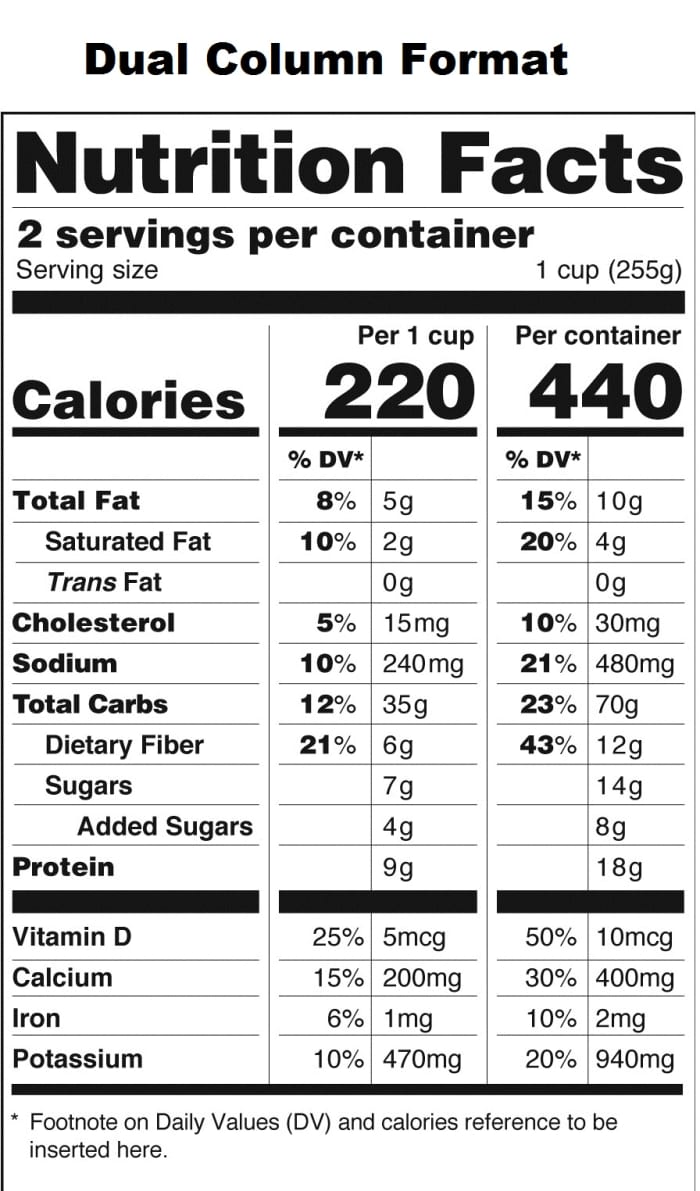
Fighting Obesity Needs Education Not Regulation - Food Labeling Should be Consumer Driven - HubPages
5 tips for decoding food labels - Harvard Health For a food with 250 calories per serving, ideally the sodium content should be no more than 250 mg. If you need to seriously restrict your salt intake consider the low-sodium, low-salt, or unsalted versions. Figure out the fiber. Aim for foods that have 5 g of fiber per serving, or at least one gram of fiber for every 10 grams of carbohydrate
Reading Food Nutrition Labels 101 and How to Decode Them Low cholesterol - 20 milligrams or less of cholesterol and 2 grams or less of saturated fat per serving. The manufacturers call it sodium, but everyone knows it is plain old salt. Limit the high sodium foods you eat, aiming for a daily intake of 2400 milligrams or less. Sodium-free - less than 5 milligrams per serving.
Label reading - Baker Fact sheets. Label reading. This fact sheet gives you guidance on understanding how to read nutrition information panels to help you identify healthy choices. This fact sheet will allow you to identify processed and packaged foods that are: lower in energy (kJ) lower in saturated and trans fat. lower in sugar. lower in sodium (salt)
How to read food labels - Heart Foundation NZ To make things simple we recommend that when it comes to the 3Ss (saturated fat, sugar and sodium) - LESS is BEST! That is choose products which contain the least amount of saturated fat, sugar and sodium per 100g . If you are watching your weight, also look for foods that contain less energy (calories/kilojoules).
Reading Food Labels - Regional Cardiovascular Rehab Facts about reading food labels. Nutrition labels provide information on key nutrients, like fat, carbohydrates, sodium, vitamins, and minerals, and can help you make informed decisions. ... Saturated and trans-fats have been shown to increase cholesterol levels in the blood, which can lead to narrowing and hardening of the arteries. For more ...
How to read food labels: MedlinePlus Medical Encyclopedia Three ounces (84 grams) of fish has less than 1 gram of this fat. Three ounces (84 grams) of hamburger has more than 5 grams. If a food has less than 0.5 grams of saturated fat in the serving size on the label, the food maker can say it contains no saturated fat. Remember this if you eat more than 1 serving.


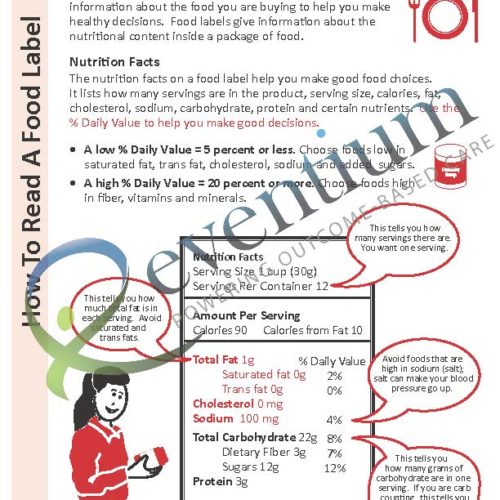
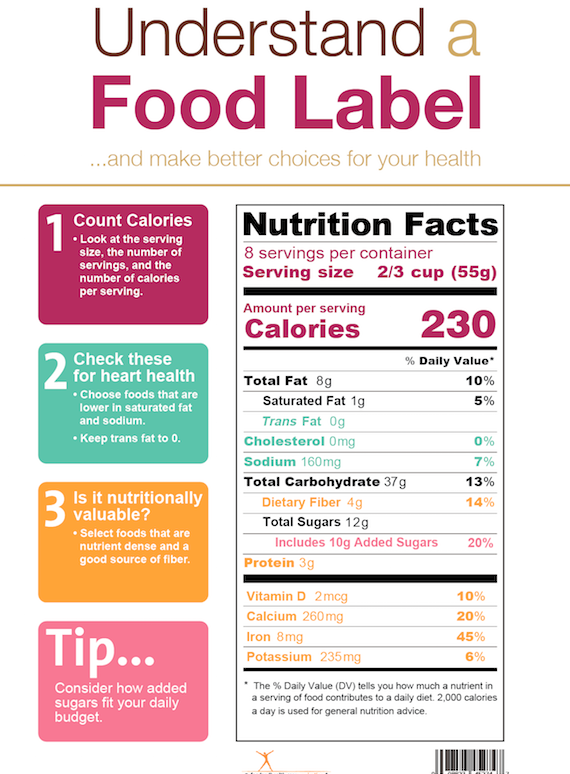


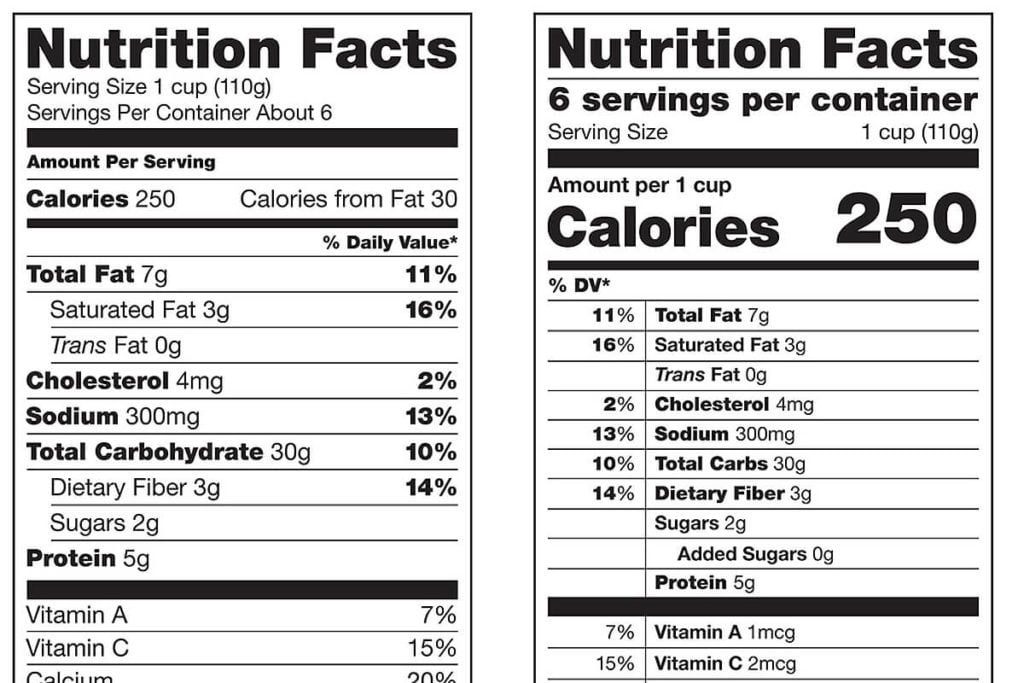

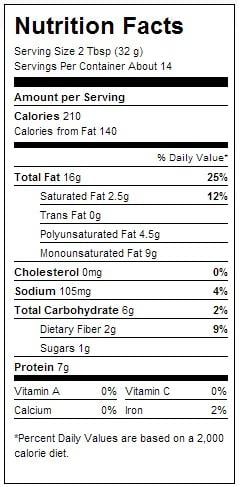



Post a Comment for "43 reading food labels for cholesterol"